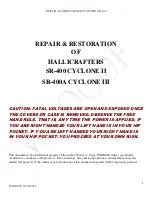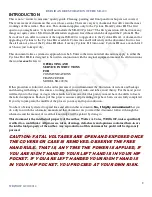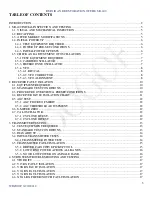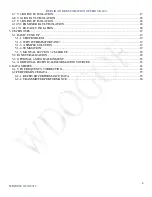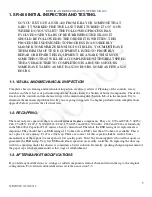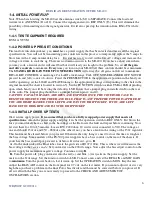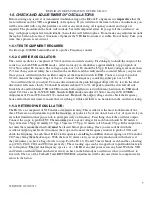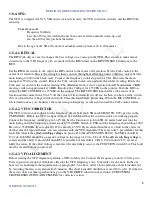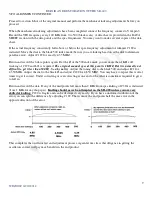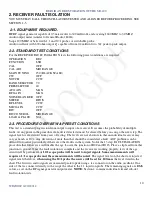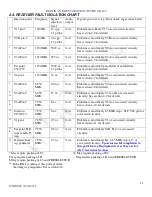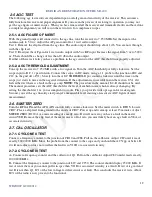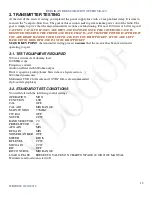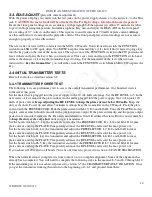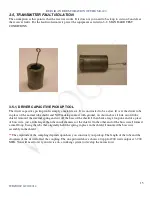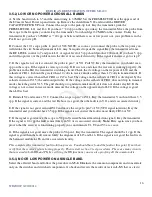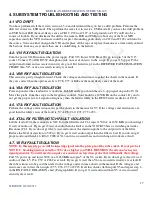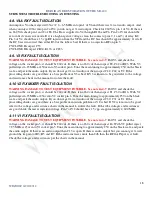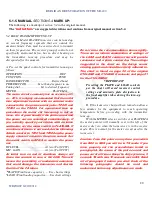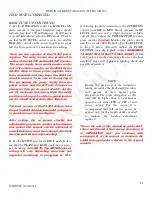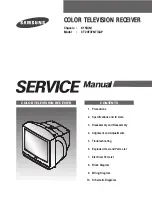
REPAIR AND RESTORATION OF THE SR-400
6
WDØGOF 6/22/20014
1-4. INITIAL POWER UP
Note: When bench testing the SR-400 set the antenna switch (S2) to SEPARATE. Connect the load and
wattmeter to ANTENNA (J1 or J2). Connect the signal generator to REC ONLY (J3). This will eliminate the
possibility of transmitting into the signal generator. It will also speed up the transition from RX to TX while
testing.
1-4-1. TEST EQUIPMENT REQUIRED
DVM or VTVM
1-4-2. POWER UP PRE-SET CONDITIONS
First and of critical importance, you
must
have a power supply that has been tested and meets all the original
specifications. You will not be transmitting power until late in this process so temporarily replace the 5 amp slo-
blow fuse with a 4 amp normal delay fuse. It is
not
necessary to start with a low AC voltage and increase the
voltage over time to cook the rig. There are no domino circuits in the SR-400. If you have a short somewhere,
you may cook a resistor and it will smell bad but it will lead you straight to the problem. So, set
all the gain
and drive controls
to minimum.
Every
time you turn on your SR-400 all these controls should be at minimum.
The
STANDARD PRE-POWER UP CONFIGURATION
will always be: all gain controls set to minimum,
RIT off, RIT CONTROL at mid-range, CAL ADJ at mid-range, CAL OFF, NOISE BLANKER OFF, NOTCH
pressed in and
fully counterclockwise
. Preset the PRESELECTOR to the approximate position in the band you
will be operating, set the LOAD and PLATE tuning to the appropriate settings corresponding to the chart in the
original manual (the chart is located in section 5). Set the FUNCTION switch to either USB or LSB depending
upon which band you will be testing the default is LSB. Insure that a jumper plug in installed in J4 on the rear
of the radio. The jumper plug should have a jumper between pins 4 and 10.
CAUTION: FATAL VOLTAGES ARE OPEN AND EXPOSED ONCE THE COVERS OR CASE IS
REMOVED. OBSERVE THE FREE HAND RULE. THAT IS, ANY TIME THE POWER IS APPLIED, IF
YOU ARE RIGHT HANDED YOUR LEFT HAND IS IN YOUR HIP POCKET. IF YOU ARE LEFT
HANDED YOUR RIGHT HAND IS IN YOUR HIP POCKET
1-4-3. INITIAL POWER UP TESTS
Ok it is time apply power.
It is assumed that you have a fully recapped power supply that meets all
specifications.
Attach the power supply and plug it in. Set the operation switch to REC ONLY. If it blows the
fuse you most likely have a short in the hi-voltage or the B+ locate the fault and repair before continuing. Now
let it sit there for 10 to 15 minutes. Locate R50, 2000 ohm, 10 watt resistor connected to V10. The voltage at
one end should 150vdc and 250 – 280vdc at the other if not; you have a fault in the wiring or the 150v regulator.
This fault must be cleared before you proceed. Otherwise the only thing we need to do at this time is rough set
the bias voltage. Some models of the PS-500 power supplies have a bias control on the rear of the chassis. If
yours has the bias control pot, proceed to
A
below. If it doesn’t, go to
B
.
A.
On the underside of the Final tubes locate the grid side of R107 (100k). This is where we will measure the
bias voltage in the
receive mode
. Set your meter on the 200vdc range. Now adjust the bias adjust control on the
power supply for maximum negative voltage. Continue to step
B
.
B.
Turn the power off; plug your meter into the red (+) and blue (-) test jacks on the power supply. Set the
meter on the 2vdc range. Set the function switch to LSB, Connect a mic and set the RF GAIN and MIC GAIN
to
minimum
. Turn the power back on. Let it warm up. Set the OPERATION switch to MOX. Key the mic.
Adjust the BIAS ADJ control on the front panel for 0.7 vdc on the test meter. If you cannot adjust it or it is very
high then you have a problem in the final PA or bias divider and this must be corrected before you proceed. If
all is well with the bias you are now ready to proceed to the CHECK AND ADJUSTMENT OF
OSCILLATORS section.

